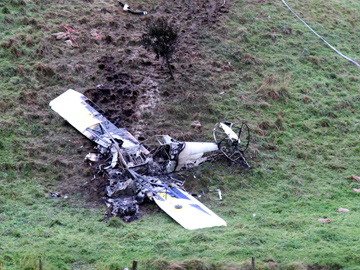
A fatal accident near Hallston, Victoria has illustrated the dangers of partial power loss after take-off in single-engine aircraft — a problem that the ATSB has been emphasising to the aviation community.
The accident occurred on 1 May 2012, when the pilot of a Piper PA25 was conducting agricultural operations from a local airstrip near Hallston. Shortly after take-off, the aircraft crashed near the base of a gully and was destroyed by fire. The pilot, the only person on board, died in the accident.
...partial power loss is actually a more complex situation than a complete failure, and can be much harder to manage.
The damage sustained during the impact and ensuing fire prevented the ATSB investigation from identifying specific reasons for the aircraft’s loss of power. ATSB General Manager Strategic Capability, Mr Julian Walsh, says that partial power loss is actually a more complex situation than a complete failure, and can be much harder to manage.
"The pilot is in a situation where the engine is still providing some power, but it may be unreliable, and the available power level might be difficult to assess," Mr Walsh says.
"As a result, pilots are uncertain about their aircraft's capabilities, and what their options are— a situation that can turn into disaster very easily."
A number of resources are available to help pilots prepare themselves for a partial power loss. One of the booklets in the ATSB’s Avoidable Accidents series, Managing partial power loss after take-off in a single-engine aircraft, provides information and strategies for dealing with such a situation if it arises.
Read the report: Collision with terrain involving Piper PA-25-235/A9, VH-GWS, near Hallston, Victoria, on 1 May 2012


